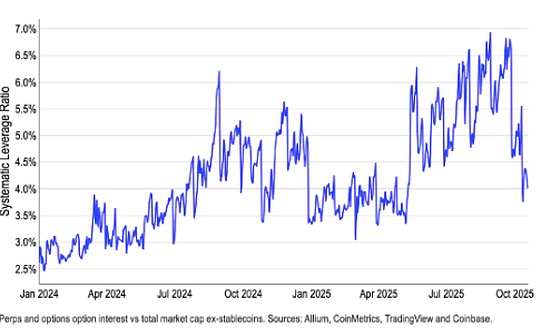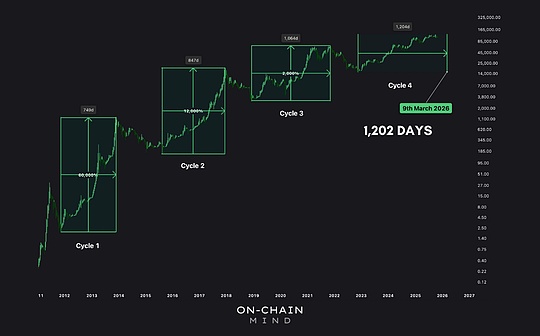
The latest speech by former vice president of the central bank: The rise and challenge of cryptocurrencies
The Rise and Challenge of Cryptocurrencies
The topic I want to share today is “The Rise and Challenge of Cryptocurrencies”.Cryptocurrency is a digital currency that operates through a computer network. The ownership of each cryptocurrency unit is recorded and stored in a digital ledger or blockchain.Blockchain is the most underlying technology of cryptocurrency, and its core is consensus mechanisms such as Proof of Work (PoW).Cryptocurrencies mainly include three types: one is payment cryptocurrency, such as Bitcoin and Ethereum; the second is stablecoins, the most famous of which are the US dollar stablecoins USDT and USDC; the third is the central bank’s digital currency, also known as sovereign digital currency, and a larger scale representative such as my country’s digital RMB.Cryptocurrencies have seven main characteristics, namely: distribution; security; scarcity; anonymity; high volatility of price transactions; large amount of energy consumption generated by the mining process; instant transactions around the world, without considering the global nature of currency exchange costs and international transfer time costs.
Since Satoshi Nakamoto (team) dug up the first block of Bitcoin in January 2009, cryptocurrencies have gradually gained a place in the financial ecosystem from a niche virtual currency experiment.At present, more than 130 countries and regions have begun to include different forms of cryptocurrencies in the scope of discussion in the mainstream financial system.Against the backdrop of intensifying global geopolitical turmoil, high U.S. fiscal deficit and sharp rise in U.S. Treasury bonds, cryptocurrency assets represented by Bitcoin are receiving widespread attention.The latest trends show that the US government is accelerating the construction of a trinity “digital dollar hegemony system” from three aspects: national strategic reserves, cryptocurrency legislation and crypto financial infrastructure, and trying to extend its global hegemony in the traditional financial field to the digital economy era.Focusing on the above background, I focus on the global trend and risks and challenges of cryptocurrency development.
1. The latest trend of global cryptocurrency development
(I) The cryptocurrency market is undergoing breakthrough progress
In January 2024, the Bitcoin Spot Platform Trading Fund ETF was officially launched, becoming a landmark event in the integration of crypto assets and traditional financial assets.In December of the same year, the price of Bitcoin exceeded US$100,000 per coin, driving the total market value of cryptocurrencies to rise sharply from US$800 billion to US$3.4 trillion in just two years.At the same time, the proportion of liquidity of the total market value of crypto assets to the world’s six major central banks (G6s) has rapidly risen from less than 1% in 2009 to 12% by the end of 2024.In the mainstream market, the Bitcoin investment attributes are switching from niche risk assets to mainstream major assets.The new Trump administration proposed the establishment of a strategic Bitcoin reserve plan (SBR), which further stimulated and strengthened the process of all this.
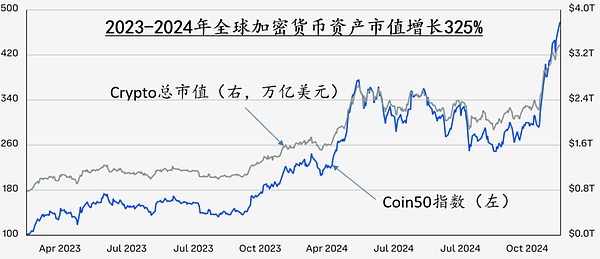
Figure 1 Global funds began to pour into the cryptocurrency market after the second half of 2023
Data source: Coinbase: Crypto Market Outlook 2025.
Since the second half of 2023, the US government’s regulatory stance on the cryptocurrency field has shown a significant shift, and its strategic intention is likely to be to try to extend the traditional US financial hegemony to the digital financial field.Against the backdrop of high debts in the U.S. government and high inflation, this strategy of the U.S. can not only ensure the centralized position of the U.S. dollar in the wave of digital financial change, but also can reversely support and ease its increasingly severe federal debt situation.This strategy may include the goals of the short, medium and long stages: in the short term, the US government is trying to build a preliminary framework for global digital currency hegemony through three major means: strategic reserves of cryptocurrency, encouraging the expansion of US dollar stablecoins and controlling the core infrastructure of crypto asset trading; in the medium term, it will continue to attract (or coerce) global leading crypto companies to migrate to the United States or incorporate them into the US government regulatory system, promote industrial agglomeration, employment and economic growth, and maintain the United States’ leading position in blockchain technology research and development; in the long term, the United States will dominate the formulation of global digital financial infrastructure and rules to ensure that the United States always holds centralized power in the wave of decentralization of the digital economy, and ensure that the US dollar always maintains a centralized position in global investment and transactions in the digital economy era.
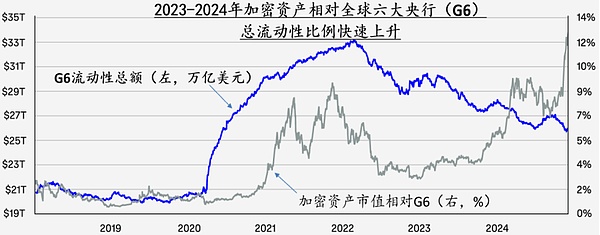
Figure 2 Cryptocurrency scale surges after the second half of 2023 and enters the mainstream asset market
Data source: Coinbase: Crypto Market Outlook 2025.
(II) The shift in the position of cryptocurrency in both political and business circles and their strategic intentions
1. Since the second half of 2023, the US government and industry have seen five iconic changes in the cryptocurrency field
First, the position of the US financial regulatory authorities has shifted from “severe suppression” to “guided supervision.”The new president of the Trump administration, Paul Atkins, is a long-time supporter of cryptocurrencies. After taking office, he actively promoted the compliance path of crypto assets. In addition, his close relationship with the new Treasury Secretary Scott Bessent reflects the new U.S. government’s active support for crypto assets and the trend of finding a new balance between financial innovation and financial investment protectors.In December 2024, the SEC approved Franklin Templeton’s crypto index ETF (EZPZ) to be listed and traded on the Nasdaq, an important sign of the comprehensive shift in the U.S. financial regulatory stance.
Second, from legislative suppression to legislative support.The U.S. Congress is actively promoting the “dual pillars” of crypto-regulatory legislation – the “21st Century Financial Innovation and Technology Act” (FIT21) and the “Guiding and Establishing a National Innovation Act of the United States Stablecoin” (GENIUS).The FIT21 Act will fully lay the basic framework for encrypted regulatory, solve many classification and jurisdiction issues, clarify the regulatory boundaries between the SEC and the CFTC (US Commodity Futures Trading Commission), formulate standards for identifying the attributes of digital assets and securities, and establish a legal framework for institutional digital asset custody business.GENIUS is committed to establishing a comprehensive regulatory framework for stablecoins and including the two major currencies, USDT and USDC, which account for 90% of the global total market value of stablecoins, into the regulatory scope.FIT21 was passed in the House of Representatives in May 2024 with cross-party support and is expected to be approved by the Senate and finally signed and implemented in 2025.GENIUS plans to hold a Senate vote in March this year.After these two bills are passed, the United States will form the world’s most complete cryptocurrency regulatory system, which will significantly affect the innovation direction and market structure of the cryptocurrency industry.
Third, the transformation from a severe crackdown attitude to a strategic asset-based policy.The Trump administration plans to launch a million strategic bitcoin reserves and include them in the Treasury Ministry of Foreign Exchange Rating Fund.In January this year, Trump signed a presidential executive order to strengthen the leadership of the United States in the field of digital financial technology, which mainly includes preparing to establish a strategic Bitcoin reserve (SBR) and prohibiting the establishment, issuance and promotion of any form of central bank digital currency inside and outside the United States, thereby combating potential competitors of any dollar stablecoin.
Fourth, the industry has shifted from hesitation to more positive responses.A large number of celebrity companies such as Apple, Tesla, and Weice have or planned to include crypto assets in their company’s asset allocation.Traditional large financial institutions (such as BlackRock, the world’s largest asset management financial group), are also accelerating their holdings of Bitcoin to increase production.Global Bitcoin ETF fund assets have exceeded 1.1 million BTC.Among them, BlackRock Bitcoin ETF (IBIT) accounts for 45% (the market value in February 2025 is approximately US$153 billion).Spot Bitcoin ETFs attracted more than $108 billion in 2024, and the crypto market and traditional financial markets are accelerating their integration.
Fifth, adjustments to tax policies.The IRS allows taxpayers to flexibly choose accounting methods for crypto assets in the temporary tax relief in 2025, alleviating tax pressure on CEX users in the short term, but may drive crypto investment to concentrate on platforms controlled by US regulators in the long term.
2. The latest developments in various fields of crypto assets show that the strategic direction behind the change in the position of the US political and business circles is likely to be the construction of a “trinity” digital era dollar hegemony system.
The three cornerstones of this system are Bitcoin Strategic Reserves (SBR), US dollar (anchor) stablecoins and the US controllable digital financial infrastructure.In this system, Bitcoin strategic reserves may play the role of gold reserves in the 1944 Bretton Woods System Agreement.Bitcoin, as “digital gold”, occupies a core value anchorage and will bring five potential strategic advantages to the United States.
First, the first-mover advantage.As the cryptocurrency with the highest consensus in the world, Bitcoin’s unique position is conducive to becoming a safe haven for capital during global geopolitical turmoil and high inflation.The United States is the first to include Bitcoin, which accounts for more than 60% of the entire cryptocurrency market value, into its national strategic reserves. This first-mover advantage will help it attract international capital to continue to gather on-chain and off-chain assets in the future.
The second is its role as a new tool for financial stability.During the outbreak of the financial crisis, the low correlation with traditional assets made Bitcoin reserves the second financial stability tool of the US government besides the traditional quantitative easing of the US dollar, which can help support the balance sheets of systemic financial institutions in some emergency situations and protect the international status of the US dollar.
The third is to enhance the competitiveness of the US dollar system in the digital age.Stablecoins pegged to the United States currently account for 95% of the total global stablecoins market value. Coupled with crypto assets that are not pegged but mainly settled in US dollars, it will further consolidate the US dollar’s position as the central currency in the digital age, thus helping to expand the dominance of the US dollar in the global monetary system from traditional finance to the digital finance field.
Fourth, strengthen the voice of American standards in the digital finance era.After occupying the dominance of the crypto market through strategic reserves and US dollar stablecoins in the future, the United States will dominate the formulation of global crypto asset rules, and export and solidify the dual-pillar US standards based on GENIUS and FIT21 through international platforms such as G7, IMF, and BIS, and promote a global crypto asset regulatory framework that is in line with its own interests, thereby ensuring its top-level voice in the formulation of international digital asset rules.
Fifth, curb the development of crypto assets of potential competitors.Through financial sanctions and legislation, restricting the development of digital assets in competitor countries, and through executive orders and legislation, any institution is strictly prohibited from establishing, issuing and promoting CBDCs within the United States.Through technical assistance, attract emerging markets to adopt the US-led payment system and squeeze the international space of competitors’ digital currency assets.
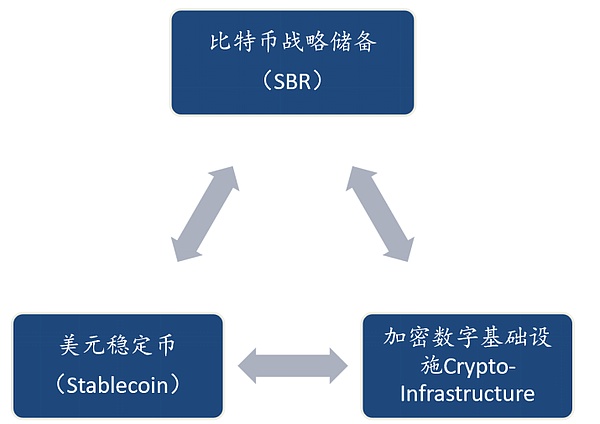
Figure 3 The “Trial” American digital currency hegemony system
3. The EU’s policy direction in the cryptocurrency field is to unify market supervision and green finance transformation
This is mainly reflected in the following three aspects: First, the EU’s “Crypto Asset Market Supervision Framework” (MiCA) came into effect on December 31, 2024, with the goal of establishing a unified and clear crypto assets supervision framework across the EU.It uniformly divides all crypto assets into three categories and conducts differentiated supervision, while strengthening compliance requirements for stablecoin issuance and crypto asset exchange operations.Promote innovation while managing risks, ensuring consumer rights and financial stability.Second, the unified regulatory framework has laid the foundation for the EU to win the initiative and voice in global cryptocurrency market competition.The third is to guide the establishment of a green financial development path for cryptocurrencies. MiCA imposes a high carbon emission tax on energy-intensive blockchains, and promotes the cryptocurrency industry to shift from PoW mechanisms to low-carbon consensus mechanisms such as PoS, thereby reshaping the regional pattern of the mining industry.
4. Other economies around the world face competition between stablecoins and sovereign digital currencies
This is mainly reflected in three aspects.First, explore and promote the continuous increase of CBDC economies.Currently, there are about 130 countries and regions around the world that are exploring and promoting CBDC.In recent years, my country’s digital RMB has continued to expand domestic and cross-border pilot projects, becoming the world’s largest sovereign digital currency.18 G20 member states including Japan, South Korea, India, Russia, etc. are also accelerating the layout of CBDC or Bitcoin strategic reserves, actively seeking digital finance sovereignty and the right to speak for rules.The second is the competitive game between sovereign digital currency and stablecoins.The CBDC model has sovereign advantages, but the US dollar stablecoin already has scale advantages.Between 2020 and 2024, USDT’s market value surged by 5.52 times, while USDC rose by 11.35 times, and the two together accounted for 90% of the total global stablecoin market value.The settlement volume in 2024 has reached US$15.6 trillion.Third, digital currencies will face the risks of regionalization and fragmentation in the future.The United States is trying to strengthen the US dollar’s digital financial hegemony through three major means: establishing SBR reserves, stablecoin legislation and restricting the issuance and circulation of CBDCs.The EU’s MiCA framework will objectively limit the development of non-Euro stablecoins.Intensified competition means that the global digital financial payment system may pose risks of market segmentation and fragmentation in the future.
5. Stablecoins are becoming the cutting-edge field of integration of crypto financial assets and traditional financial assets
This mainly presents two typical facts.On the one hand, stablecoins enhance the resilience of off-chain US dollar assets.In 2023-2024, the market value of stablecoins increased rapidly and exceeded the growth rate of US M2, which strongly supported the demand for US dollar and US Treasury bonds in an uncertain financial environment with the continued high deficit in the United States.On the other hand, stablecoins are gradually becoming the mainstream payment channel.In the first 11 months of 2024, the stablecoin market completed US$27.1 trillion in transactions, including a large number of P2P and cross-border B2B payments, which means that companies and individuals are increasingly using stablecoins to realize commercial value while meeting regulatory requirements, and are closely integrating with traditional payment platforms such as VISA and Stripe.
2. Risks and challenges that the new trend in cryptocurrency development has formed on my country
1. Objectively look at the current advantages and disadvantages of my country in the fields of blockchain and cryptocurrency
There are three main advantages:First, the digital RMB and blockchain industries are leading the layout.In the field of central bank digital currency, the digital RMB is currently the world’s largest CBDC project and has received national strategic support. It has been steadily promoted since its research and development in 2014, covering multiple fields such as retail, wholesale payment and cross-border settlement.Since 2021, the research and development and practical progress of the cross-border digital currency bridge project (mBridge) has also led the world.These foundations make the digital RMB expected to become a financial trading tool and asset carrier in the future competing with the US dollar stablecoins.In terms of blockchain industry, my country has incorporated blockchain technology into its national strategy in its early stages of its infancy, and has clearly put forward the development direction of the integration of blockchain and the real economy.The industrial market size and growth potential are great. It is expected that the scale of China’s blockchain market will exceed 100 billion yuan in 2025. It has been widely used in many fields such as finance, supply chain, government and business services, and the number of enterprises’ registrations continues to grow. By the end of 2023, there are 63,300 companies.Second, there are rich application scenarios.The digital currency scenario has expanded from the original retail, transportation, government affairs and other fields to a wider range of areas such as wholesale, catering, entertainment, education, medical care, social governance, public services, rural revitalization, and green finance.The blockchain industry has many mature cases in many fields such as supply chain finance, cross-border trade, and e-government.The third is strict risk prevention and control.my country has implemented strict supervision of cryptocurrency trading and initial coin issuance (ICO), which effectively prevents the risks of the virtual economy and provides a more controllable and stable industrial environment for the compliance development of digital currencies.
my country’s current disadvantages are mainly reflected in the lack of international competitiveness in some areas.First, the influence of technical standards is relatively lagging behind.Due to differences in regulatory regulations, the United States currently dominates the underlying technologies such as ZKP and Layer2 expansion. The EU has also set technical barriers through the MiCA framework, resulting in my country insufficient voice in the formulation of core agreements and global standards.Second, the development of the public chain ecosystem is relatively lagging behind.my country’s blockchain industry is mainly composed of alliance chains and private chains. The lack of public chains has led to a scenario gap with Europe and the United States in innovation capabilities in decentralized finance (DeFi) and Web3.0.
2. The U.S.-led crypto asset hegemony strategy poses multiple threats to my country’s financial security
First, capital outflows and exchange rate pressure.The long-term appreciation trend of crypto assets represented by Bitcoin against international currencies such as the US dollar, as well as the rapid expansion of the transaction scale of US dollar stablecoin, has further strengthened the dominance of the US dollar in the global monetary system through cross-border payment convenience and value storage functions, which will undoubtedly squeeze the RMB’s valuation and internationalization space.In addition, the US dollar-dominated encryption channel has become a new path for capital flight.In recent years, the wave of large-scale financing of leading American companies in Bitcoin and on-site cryptocurrency ETFs has produced a strong “demonstration effect”, which may attract some domestic capital to flow out through gray channels.
Second, DeFi regulatory arbitrage has formed cumulative industrial competitive advantages.The relatively loose regulatory and tax policies of the United States have attracted the inflow of global DeFi innovation resources, and thus gained more full-chain technical dividends from the underlying standards to the application layer.After a long-term accumulation, it will form a competitive advantage over my country’s digital financial infrastructure technology in the future.
The third is the competition for underlying technical standards and innovation capabilities resources.On the one hand, the United States is currently in a dominant position in innovation in fields such as ZKP and Layer2, and the EU is also gaining the network effect of a unified market after integrating supervision through MiCA, and setting up technical barriers.my country needs to be vigilant and prevent the risk of falling behind the crypto asset industry standard setting.On the other hand, my country is facing pressure to relocate innovation resources in the blockchain industry: the EU’s crypto industry carbon emission policies and tax incentives for US mining sites have given Chinese mining companies and blockchain venture capital companies a tendency to transfer to Central Asia, the Middle East and the United States, which is objectively unfavorable to the innovation capabilities and computing power security of the domestic blockchain industry.
Fourth, the threat of US crypto assets hegemony.First of all, the United States is accelerating the gradual inclusion of mainstream cryptocurrency assets into its financial hegemony system. Once this trend is established, it will inevitably squeeze the strategic development space of my country in the field of digital finance in the future.Secondly, after the Russian-Ukrainian conflict, the US government, together with the United Kingdom, the UAE and other countries, imposed large-scale long-arm financial sanctions on Russian governments, institutions and individuals in the field of cryptocurrency, seized and confiscated a large number of cryptocurrency assets, and arrested relevant practitioners. The power of its digital financial hegemony is initially emerging.Finally, the Trump administration promoted the strategic reserve plan for Bitcoin and boycotted foreign sovereign digital currencies, which also intensified the confrontation between China and the United States in the field of digital currency.
Of course, crypto assets represented by Bitcoin have now shown a serious market bubble state, and the continued appreciation is unsustainable. Once the bubble bursts, it will be a huge blow to the US crypto asset hegemony strategy.In this regard, we must maintain a clear understanding and strategic determination, adhere to the value concept of financial services to the real economy, and firmly follow the path of a financial power with Chinese characteristics.■







